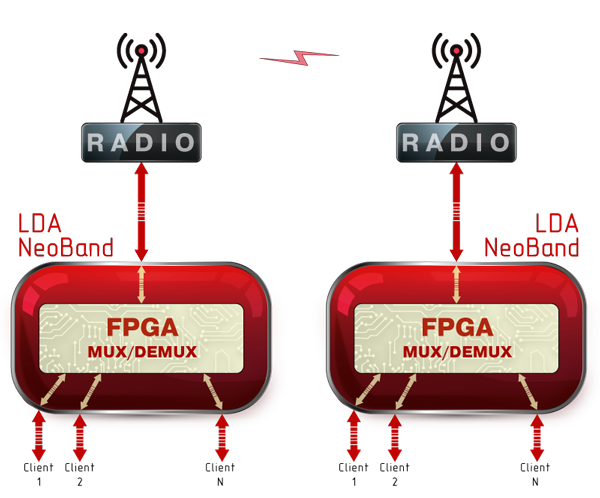Powered by LDA's Neo platform, the NeoBand solution supports up to 32 client ports.
Ultra-low latency
Depending on the underlying transport specifics and selected operation mode, NeoBand latency can vary between 50 – 70 ns wire-to-wire on one device. If needed, the system may be optimized for specific use cases.
Uninterrupted delivery of customer packets
No packet slicing. Allocated bandwidth limits are maintained through time slots. NeoBand imposes dynamically calculated delays after packet transmission to ensure the customer cannot send more data while their bandwidth limitation is in effect.
The flexible delay algorithm allows customers to send a packet of any size as long as it does not exceed the maximum allowed for the port.
EQLR Arbitration
For collision arbitration, NeoBand uses LDA's proprietary EQLR method.
The EQLR arbiter guarantees fully fair access for all client ports by tracking all ports collisions and determining the port that gets the “right-of-way” based on accumulated data.
No fixed bandwidth slots
Allows for high granularity with bandwidth allocation.
Idle-time bandwidth increase
Allows per-port configuration of idle-time bandwidth increase.
Short Ethernet Packet Support
Supports packets as short as 16 bytes.

